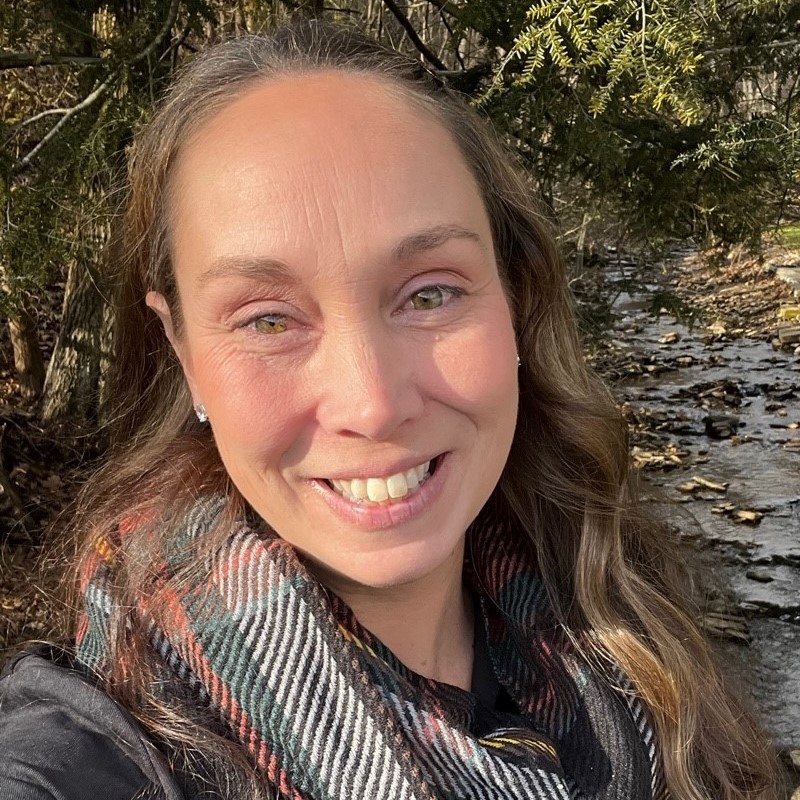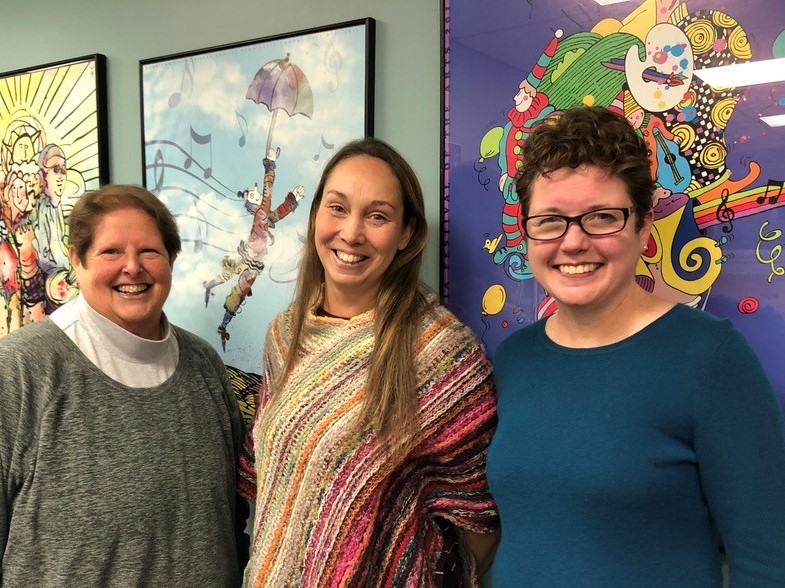Pamela Snyder Etters sees art as a source of empowerment for anyone who interacts with it.
“You’re providing the tools, and they are the ones that are running with it,” says Etters, the new executive director of the Central Pennsylvania Festival of the Arts.
Succeeding Rick Bryant, who retired in January after leading the organization since 2005, Etters says she is approaching the July 12-16 festival primarily as an “active observer.”
“We’re definitely holding to tradition pretty strongly this year. … I don’t want to dump the apple cart,” she says. “They know what they’re doing here. Carol [Baney, the festival’s director of operations] has been here for twenty-seven, twenty-eight years. Her expertise is through the roof, and Jen [Shuey, the director of development] is phenomenal at what she does.”
As for her longer-term goals for the festival, Etters says those will come into sharper focus with more time here.
“I think it’s going to be small stuff that could make a big impact without changing the big overall footprint of what the festival is,” she says. “I’m a big collaborator; if anything, I would expect there to be more collaborations with other entities throughout the community.”
Etters, who has served for the past two years as executive director of Citizens for the Arts of Pennsylvania and previously at the Altoona Symphony Orchestra, says the festival must continue to adapt to the times to maintain its success. That includes appealing to younger generations.

Etters is passionate about empowering young people, and she uses some very different disciplines to do it.
A muralist, she is the founder of Murals Talk Foundation, which uses mural construction to bridge cultural, economic and social gaps with young people near and far, including in Costa Rica and Jamaica.
Etters is also the head women’s soccer coach at Penn State Altoona, a position she’s held since 2010. Before getting into coaching, Etters starred at Altoona Area High School and played for the Maryland Pepsi Pride in the Women’s Premier Soccer League.
Here are some highlights from our conversation:
You’re an artist, the leader of an arts organization and you’re the women’s soccer coach at Penn State Altoona. That’s a lot. Do you see connections between art and sports?
Etters: I definitely think there’s a connection between art and any other discipline in life. For me, anytime that you’re creative in art, it really exercises your brain in being creative and thinking outside the box, and I think there are definite crossovers with sports for that. Maybe not anything physically, but mentally, for sure.
How do you juggle all that?
Etters: Well, I’m also a mom of two very active daughters [ages twelve and seven, with husband, Travis] as well. But for me, it’s pretty simple because I love all of those things. From the time I wake up at five in the morning to go work out until I go to bed in the evening, I’m on the go. But it’s all things that I’m very passionate about, whether it’s soccer practice, hauling my kids to soccer practice or karate, finding time to create, or being in the office.
You’re a muralist.
Etters: I am. Aside from working here, I actually have a foundation called Murals Talk Foundation; it is housed through the Central Pennsylvania Community Foundation in Blair County. The Murals Talk program uses mural construction process to build bridges over cultural, social and economic gaps for kids. We work with kids from different walks of life, and we connect them to kids that are from our region. We work with kids in other cultures, or even just from other states or other regions from within our own state, or maybe with different social limitations.
The reason it’s called Murals Talk is because it provokes conversation; that whole process gets kids talking about themselves, their peers, other cultures, other people, and it helps connect them by doing so.
What drew you to murals?
Etters: I’ve always been sort of naturally inclined to paint large. I actually occupied a grad student studio during my time as an undergrad [at Penn State, where she earned a bachelor’s in fine arts] because my paintings were just too big. And I’ve also always been very community oriented. I’ve witnessed, even in my own life, how artwork and that process can sort of change you. So, I wanted to be able to provide that for others.
My very first project was in Altoona; I just asked them if I could have a wall and paint a mural. They said sure, and it sort of continued from there. And then in Milton, Pennsylvania, they hired me to do a series of murals in that community. While I was there, I discovered that that process was very attractive to kids and that they responded in a very positive way to an adult giving them that control; allowing them to paint on a mural was a big deal. I started to really think about how creating murals with children could positively impact their lives and the community at large. That’s a big gift for little kids to give their community and I find that we often discount the youth of today. Well, this is a way for them to contribute to their communities, but also for them to remind themselves that they have the power to contribute positively to their community and to the region.
You’re now leading an iconic festival here. You’ve talked about maintaining the traditions, but also navigating the need to adapt to modern societal preferences. What’s that entail?
Etters: We’re trying to make sure that the real core and the tradition of the festival remains what it has been because that’s what people love. But we’re looking at how we can keep the elements, but maybe make sure that we’re attracting that next group. I think from going way back to my experience with the Altoona Symphony, this is something that we had struggled with when I first took over, was sort of the aging-out of participants, whether it’s in the orchestra itself, or just the ones that are coming and attending the concerts.
I think that right now, there are a lot of arts organizations that are really pushing to make sure that they are relevant to the next generation, and that we’re providing something that is going to bring them out. But also, connect them across all those generations.
One of the biggest steps we’ve taken [for this year] would be our app, where we’re creating a festival mobile application. When I attended the festival, my biggest stress was that I’m bringing my kids, and they are not going to tolerate mommy walking and looking through every single booth, the amount of time that would take me without having some sort of intermissions along the way. When you’re getting ready to come to the festival and you’re trying to plan, this app will help you do that. … Through the app, you’ll be able to star the different things that you want to experience. On the bottom, there’s a section that will say “My Festival,” and when you click on that it’ll populate everything that you selected. We’re hoping that will be a nice tool.
Aside from that, we are sticking fairly true to traditions for this year; just a few minor things that we’re adjusting. Maybe the biggest thing is some new musical acts. We listened to what the feedback has been and we kept a few of the favorites. But we have brought in some new performers [including bluegrass, rock and folk] and I think that will be exciting for people. We really want to make sure that there’s something for everybody. T&G
Mark Brackenbury is a former editor of Town&Gown.



